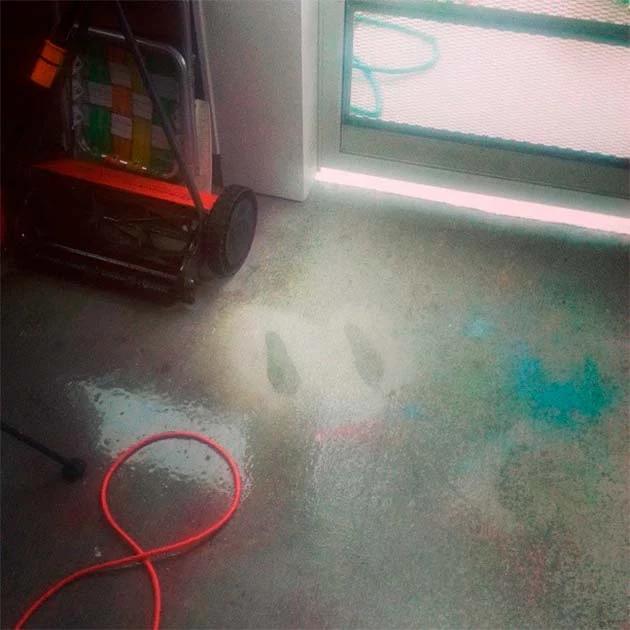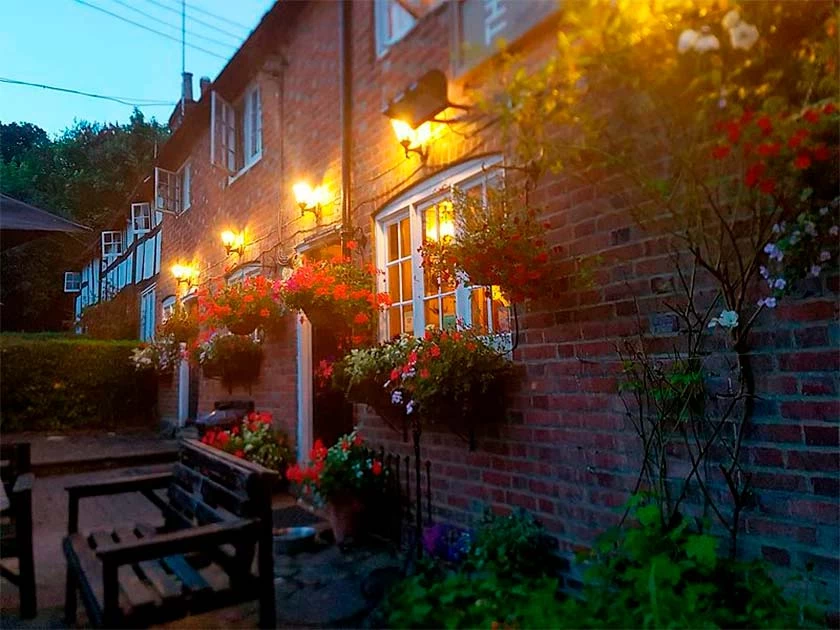Meadow Cottage in Dodleston, England, was an 18th-century brick stone cottage-style house owned by a man named Ken Webster. Dating back many centuries, the house was bound to have many secrets hidden deep in its foundations.
But Ken was to find that the ghosts of Meadow Cottage were not peaceful. They reached out to him from the past with accusations and admonishments, but they used cutting edge technology to do so.
The First Signs
The signs of unnatural activity in the cottage were strange, six-toed footprints in dust that seemed to walk up the walls of the old cottage. At first, Ken and his girlfriend dismissed the footprints as a prank.
Meadow Cottage was in the middle of renovation and repair at that time, and Ken Webster took a bucket of paint and decided to paint over the footprints when they failed to come off when the walls were cleaned. Ken Webster believed that he was done with the footprints for good. However, to his shock and surprise, the six-toed footprints resurfaced again in the same place.
There were more eerie incidents that go unexplained today. Ken and other inhabitants of the house would go on to experience sudden gusts of cold winds. They would also see shadows moving around and feel the presence of an invisible entity around the house. They even found tins of cat food stacked on top of each other stacked in a pyramid.

But things went further when the ghosts tried to communicated directly with Ken. In doing so, they used the most suitable nearby equipment: Ken’s home computer.
The messages, which poured out of Ken’s computer from an unknown source, became known as the Dodleston Messages. Ken Webster could not make much of the messages as they were written in misspelled English and were very cryptic, almost like riddles.
The grammar used in the messages was also very unusual and this offered the first clue. Ken and others who read the messages started to believe that they came from the distant past, and this was seemingly confirmed when one claimed to be from the year 1546.
The messages started coming in when Ken borrowed the computer from the school where he taught and kept it at his home. At first, he thought whoever wrote the messages must have pre-written them and stored them on the computer.
But it was when the spirit accused Ken and his girlfriend of stealing its home that they understood that the entity had been living with them for quite some time. In fact, they realized that the entity might be part of the history of the place.
The first message the couple received from the computer was asking about the two and their identity. It was as if the entity could see who the two were but did not place a name on them until the two told their names.
This first Dodleston messages was not easy to understand, however, being delivered in the form of a cryptic poem that was ominous and difficult to interpret. It was unlike anything Ken and Debbie had ever read.
The deep yet cryptic poem talked about nightmares, fame, growth, and death as if summing up life and death in one poem. After the first message, there was a second one after some days. The second message was not the same as the poetic first message.
The second message was written in archaic English. The second message called Ken a worthy man and Debbie a fanciful woman, as if the entity admired them. However, the crux of the message was scolding them for taking the entity’s house.
The entity even calls them out directly on the perceived theft, which is a great crime in its eyes. On the other hand, it also shows confusion as to modern fittings in the house, writing about the “light that the devil makes” that Ken and Debbie use.
- Murderous Intent: The Cranmers and the Demon of Brownsville Road
- Terrifying Letters: The Watcher House of Westfield, NJ
When it is studied closely, it is seen that the entity must be talking about electricity and the electric lights and other devices in the house. Since the entity claimed to date back to the mid-1500s when there was no electricity for power, it is possible that the concept of electricity baffled it and also harmed it, which is why the light was called that of the devil.

In the second message, the entity starts out by saying that it writes on behalf of many. It might mean that there are other entities in the house, and it is only the first one to talk to them. It might also mean that it is talking on behalf of all the spirits in the world or around the area.
But the confusing nature of the messages means that there are many meanings and interpretations hidden in them. The messages were signed as L.W. Later, and paranormal investigators who were called in came up with the name Lukas for the entity.
The style that the entity wrote the messages matched the time and regional dialect that the entity mentioned in his messages. But the Dodleston messages did not end there, and eventually a series of messages continued to appear over a period of more than a year.
Who Wrote the Dodleston Messages?
Throughout that time, when Ken and Debbie were contacted by the entity and also conversed with it, the two humans tried to ask it about who it was, where it was from, and its background. Although the answers did tell them more about it, it would knowingly present false inform them to check if they were really from the future or not.
Research into the messages and further studies suggested that the entity’s real identity was Thomas Harden, who was a vicar in his past life. He was a resident of Gloucestershire in the 1550s.
The story of Dodleston’s messages became more complex when the entity mentioned the year 2109 and how it thought that Ken and Debbie also belonged to the future year. After that, the couple started getting messages from 2109 where the pronoun was “they” in the plural.
These confusing messages could be really interpreted the way a reader would want to. Were the Dodleston messages from the future or the past? Or were the messages merely a computer glitch? Or did Ken fake them, to sell a book and profit from the gullibility of the public?
No one knows yet.
Top Image: Who was writing the Dodleston Messages, and what were they trying to say? Source: Timitrius / CC BY-SA 2.0.
By Bipin Dimri